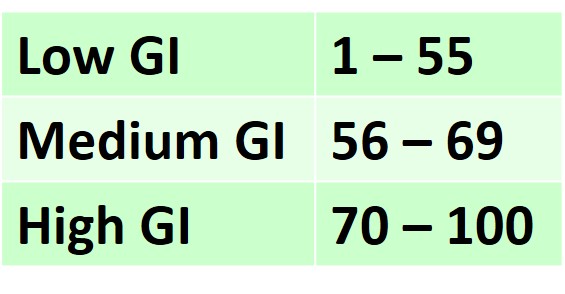Glycemic Index and Glycemic Load
When talking about carbohydrate foods some people like to use the GLYCEMIC INDEX (GI) rating. The GI rating basically measures how fast a food will raise blood glucose levels. It tells you if a food is fast or slow releasing. A low GI food will release energy more slowly, a high GI food will give a faster release of energy.
There are many books and internet sites that will give you listings of foods and their GI rating. They are described as Low, Medium or High.
As far as blood markers of health are concerned a diet with lots of low GI foods will generally be superior to a diet with lots of high GI foods. However GI does have a few drawbacks.
GI is a QUALITATIVE measure which means it tells you about the effect of the carbohydrate but it does not tell you how much of the food is carbohydrate (a QUANTITATIVE measure).
Focussing just on GI can cause unnecessary exclusion of some foods.
A great example is watermelon.
Gram Measures
A gram measure tells you how much of the food is carbohydrate ie it is a QUANTITATIVE measure but it doesn’t tell you anything about its quality, what it does to your blood sugar levels.
So a more comprehensive measure has been designed that takes into account both QUALITATIVE and QUANTITATIVE measures. This is called GLYCEMIC LOAD (GL).
Glycemic Load (GL)
GL takes into account both
- GI – the qualitative measure of a food
- grams of available carbohydrate in the food – the quantitative measure of a food
By “available carbohydrate” we mean
total carbohydrate in the food – fibre = amount of carbohydrate we actually digest
As long as you know the GI number of a food and the grams of available carbohydrate in the food you can calculate GL using a simple formula
(GI / 100) * available carbohydrate
The watermelon we mentioned earlier is a great example.
The GI of watermelon is around 72. If you were to focus solely on GI this may cause you to eliminate a nutritious and tasty food from your diet. A 100g serving of watermelon contains around just 6g of available carbohydrate. Using our formula
(72 / 100) * 6 = 4.32 (round down to 4)
And we can see from the following table that we don’t need to eliminate our watermelon at all.


